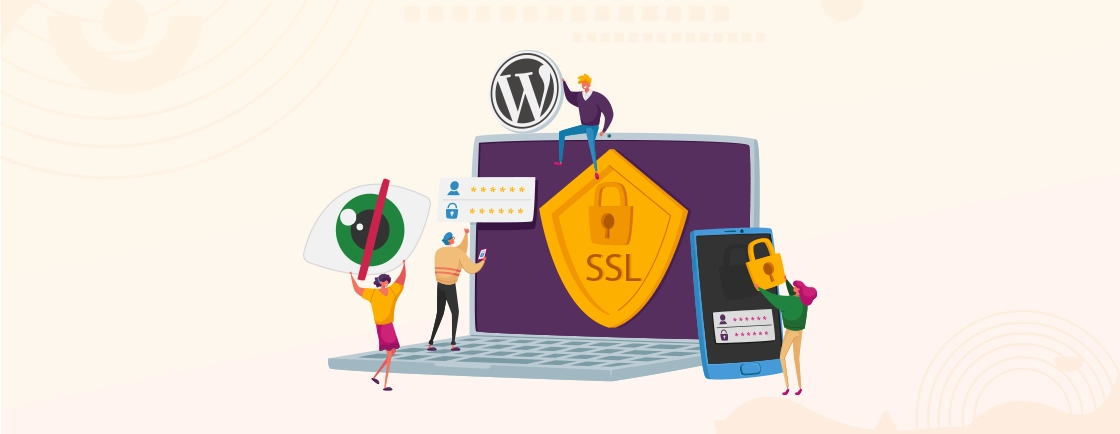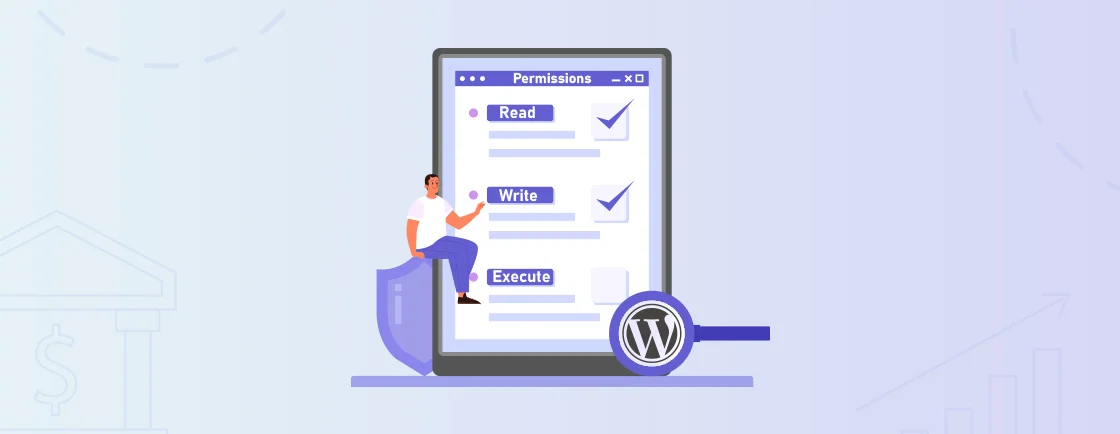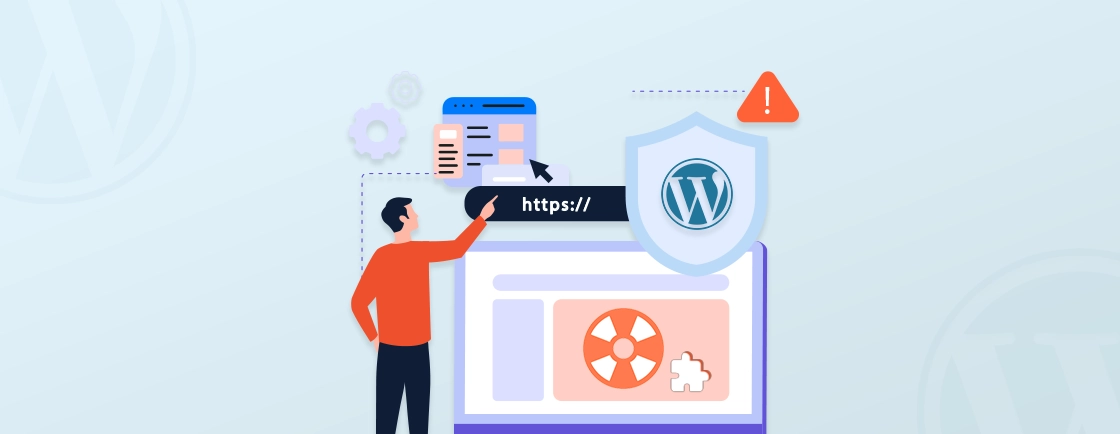Table of Contents
It’s no news that WordPress is the most popular web development platform, with over 40% of all websites based on it. That is, thanks to its content management capabilities and user-friendliness. But still, with great popularity (and open-source nature) comes heightened security risks.
We can assure you WordPress, by itself, is secure, when maintained properly. Most WordPress vulnerabilities come from outdated plugins, weak passwords, or misconfigured settings. So for the best results, you can implement regular updates, strong authentication, etc.
Through this blog, I’ll try to explain if WordPress is safe, and how the WordPress experts ensure your website is protected. Let’s get straight into it.
Is WordPress Safe?
WordPress is inherently secure—its core software is rigorously tested and regularly updated to patch vulnerabilities. However, its open-source nature and extensive plugin ecosystem introduce risks if not managed properly.
Common security issues include:
- Outdated software (core, themes, plugins)
- Weak passwords and poor user permissions
- Malicious plugins/themes from untrusted sources are common reasons to avoid nulled WordPress plugins theme.
- Brute-force attacks targeting login pages
The platform’s security ultimately depends on user practices. You can implement strong passwords, routine updates, and trusted security plugins to make WordPress secure. The key? Well, you can make an informed decision and choose WordPress website maintenance services.
Common Vulnerabilities in WordPress Websites
Yes, WordPress is often considered as the best CMS. But of course, it’s not without its flaws. There are some security concerns; in that WordPress is vulnerable to certain threats. Let’s look at a few of these.
Weak or Stolen Login Credentials
WordPress websites are often a target of brute-force attacks. Hackers systematically guess login credentials (usernames and passwords) to gain unauthorized access. Common threats include:
- Default or weak passwords (e.g., admin123, password).
- Credential stuffing (reusing passwords leaked in other breaches).
- Phishing attacks tricking users into revealing login details.
Once inside your website, an attacker can install malware, deface the website, and steal sensitive data. This is when you’ll need to scan the WordPress site for malware. They may even use it for spamming and phishing on other websites.
How to Fix It?
Here’s how you secure the WordPress website:
- Enforce Strong Passwords: Go for 12+ characters, mixing letters, numbers, and symbols, if possible.
- Enable Two-factor Authentication: Implement WordPress 2FA to add an extra layer of security and block unauthorized logins.
- Limit Login Attempts: Plugins like Wordfence or Login Lockdown & Protection block IPs after failed attempts.
- Change the Default Login URL: Use a WordPress plugin like WPS Hide Login to rename /wp-admin to a custom path.
Most breaches start with stolen credentials. So locking down logins is the easiest way to prevent a vast majority of attacks on the site.
Outdated Core, Plugins, & Themes
Running outdated WordPress core software, plugins, or themes is another incredibly common yet dangerous vulnerability. Ignoring updates means you won’t benefit from security patches for known exploits. There might even be compatibility issues that break functionalities and tend to create new vulnerabilities.
Common consequences of outdated WordPress include backdoor access to your server. It also leads to malware injections, spam injections, and data theft.
How to Fix It?
Here’s how you secure the WordPress website:
- Enable Automatic Updates: Enable minor auto-updates in wp-config.php file.
- Implement a Staged Update Process: Try to test the updates on a WordPress staging site before pushing them live.
- Remove Unused Plugins & Themes: Delete (don’t just deactivate) unused plugins. Keep only one default theme (like Twenty Twenty-Five).
Try to maintain a regular WordPress update schedule, like weekly, monthly, or quarterly. And have a rollback plan for your WordPress website.
You may also consider a managed WordPress hosting plan. It can handle core updates automatically with testing.
Lack of Web Application Firewall
A Web Application Firewall (WAF) is like a security gatekeeper. It blocks malicious traffic before it reaches your WordPress site. Without it, your site will be exposed to common attack vectors like SQL injection, XSS attacks, brute-force login attempts, and DDoS attacks.
Without the firewall, hackers can exploit vulnerabilities in real-time. And malicious bots can scrape content or inject spam.
How to Fix It?
You can implement a firewall in your WordPress website in three ways: through cloud-based WAF (Sucuri, Cloudflare, Wordfence), server-level WAF (like ModSecurity). You may also opt for a plugin-based protection (through All-in-One Security). Here’s what you need to do:
- Always whitelist your IP to avoid locking yourself out.
- Set up email alerts for blocked attacks.
- Combine with Rate Limiting (blocks brute-force attempts).
- Test your WAF with pentesting tools like WPScan.
For the best results, you need to implement WAF with other strategies, like updates, strong logins, and backups.
Insecure Hosting
Your hosting environment is the bedrock of WordPress security—if compromised, all other protections become irrelevant. Common issues with the insecure hosting are shared server contamination, outdated server software, and poor isolation.
A majority of WordPress vulnerabilities happen at the server level and cheap, shared hosting cuts on security costs.
How to Fix It?
Here’s what you need to do to secure the hosting environment:
- Choose the Right Hosting Tier: Business critical sites will benefit from managed WordPress hosting (like Kinsta, Hostinger, etc.). But low traffic websites will do just fine with shared hosting (like Bluehost, SiteGround, etc.).
- Server Hardening Essentials: Disable XML-RPC in WordPress and set permissions to 755 for folders and 644 for files. You can also implement mod_security and OWASP rules.
You also need to implement uptime monitoring, off-time backups, and real-time alerts. And migrate to cloud-based WordPress hosting if your site handles sensitive data.
Supply Chain Attacks
A supply chain attack means a hacker has compromised trusted plugins, themes, or third-party services to inject malicious code. Unlike direct attacks, these exploit the trust relationship between WordPress sites and their dependencies.
Some of the common attack vectors include fake plugins or themes, compromised plugins, and hijacked updates.
How to Fix It?
Here’s how you prevent and mitigate supply chain attacks:
- Vet Before Installation: Only use WordPress.org plugins and check the last update date. You may also use a WordPress Plugin named Plugin Check (Quite the irony, isn’t it. Use a plugin to check plugins.).
- Runtime Protections: Monitor file integrity, disable PHP execution, and restrict plugin permissions (via the .htaccess file).
- Update Strategy: Delay non-critical updates and use auto-rollbacks.
Try to establish a two-person review for plugin additions in business environments. No single admin should have unchecked rights over plugin installation.
Or maybe, instead of following through so many steps, opt for our WordPress development services. We perform weekly security audits to ensure there are no vulnerabilities affecting the website.
Best Practices for WordPress Website Security
While WordPress is prone to some security threats, you can prevent them (and fix if need be) by following a comprehensive WordPress security guide. Here are a few of these practices:
Keep Everything Updated
Outdated WordPress core, plugins, or themes are a major factor in why WordPress sites get hacked. Enable auto-updates for minor releases and manually review major updates weekly to patch vulnerabilities before exploits strike.
How?
- Enable auto-updates for WordPress core (minor versions).
- Manually update plugins & themes weekly (test in staging first).
- Remove unused plugins/themes—they’re still security risks.
Secure User Access
Brute-force attacks target weak logins. Enforce 16-character passwords, 2FA, and limited login attempts. Never use ‘admin’—create unique usernames for all accounts.
How?
- Use strong passwords (16+ chars, no common phrases).
- Enforce Two-Factor Authentication (2FA) (Google Authenticator, Wordfence).
- Limit login attempts (3-5 tries before lockout).
- Change default admin username from “admin”.
Install a Web Application Firewall (WAF)
A WAF blocks SQL injections, XSS, and DDoS attacks in real-time. Cloudflare’s free plan or Sucuri’s advanced filtering add critical preemptive protection.
How?
- Use Cloudflare (free plan available).
- Enable Sucuri Firewall (~$10/month).
- Configure ModSecurity (for advanced users).
Choose Secure Hosting
Cheap hosting often lacks firewalls and isolation. Opt for managed WordPress hosting with PHP 8+, auto-patching, and malware scanning to prevent cross-site contamination.
How?
- Use managed WordPress hosting (Kinsta, WP Engine).
- Ensure PHP 8.0+ (never use PHP 5.6/7.0).
- Verify daily backups & malware scanning.
Protect Against Malware
Malware hides in plugins, themes, or uploads. Scan weekly with Wordfence, disable PHP execution in /uploads/, and monitor file integrity to catch silent infections early.
How?
- Scan weekly with MalCare or Wordfence.
- Disable file editing in wp-config.php.
- Set secure WordPress folder permissions (folders: 755, files: 644).
Backup Regularly (3-2-1 Rule)
Follow the 3-2-1 backup rule: 3 copies, 2 storage types (cloud + local), and 1 offline backup. Test restores monthly—unverified backups are worthless.
How?
- 3 copies (live site + 2 backups).
- 2 different storage types (cloud + local).
- 1 offline backup (immune to ransomware).
Harden WordPress Core Security
Lock down WordPress: Disable XML-RPC, rename wp-login.php, and restrict file permissions (755 folders, 644 files). Small tweaks thwart 80% of automated attacks.
How?
- Disable XML-RPC (if not using Jetpack).
- Change wp-login.php URL (WPS Hide Login plugin).
- Block brute-force attacks with Fail2Ban.
Monitor & Audit Activity
Real-time logs reveal breaches before damage spreads. Tools like WP Activity Log track logins, edits, and plugin changes—critical for forensic investigations post-attack.
How?
- Use WP Activity Log (tracks all user actions).
- Set up uptime monitoring (UptimeRobot).
- Check Google Search Console for security alerts.
If these strategies don’t go as planned, you can hire WordPress developers to handle the process for you.
So, is WordPress Secure?
WordPress is as secure as you make it. While its core software is rigorously maintained, your security habits determine real-world safety. Some of the key practices involve keeping software updated, enforcing strong logins, using a firewall, and maintaining backups.
No platform is 100% hack-proof, but WordPress can be a safe choice if managed responsibly. So stay proactive, informed, and the WordPress site will be safe and secure.
And if you still need assistance with your website security, connect with our WordPress professionals today! Contact us to get started!
FAQs on WordPress Safety
Is WordPress secure by itself?
Yes, WordPress core is highly secure when updated. Most breaches occur due to poor maintenance (outdated plugins, weak passwords, or misconfigured hosting).
What’s the #1 security mistake WordPress users make?
Using weak passwords or the default “admin” username. Enable two-factor authentication (2FA) and limit login attempts.
Can I trust free WordPress plugins?
Only if downloaded from WordPress.org or reputable developers. Nulled (pirated) plugins often contain malware. Always check ratings, update frequency, and support threads.
Do I need a firewall for WordPress?
Yes. A Web Application Firewall (WAF) (like Cloudflare or Sucuri) blocks brute-force attacks, SQL injections, and malicious bots before they reach your site.
Are nulled (pirated) themes dangerous?
Extremely. They often contain backdoors, cryptohackers, or ransomware. Always pay for legitimate licenses.
Create with WordPress CMS
Build flexible and scalable websites using WordPress's powerful content management system.





